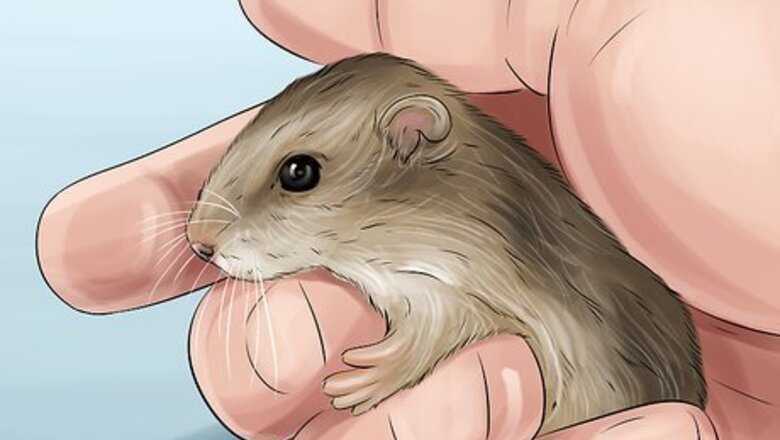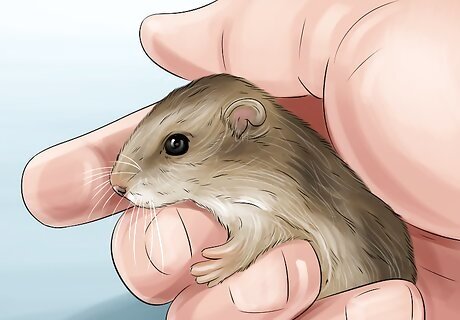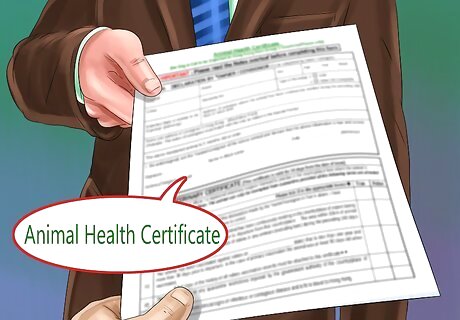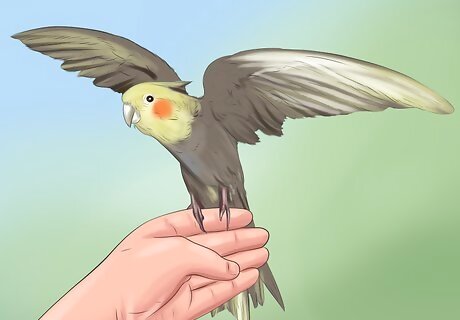
views
Shipping Pets Via Airplane

Take your pet on the plane with you if possible. If you want to ship a small pet on an airplane, the easiest way is to accompany the pet on the same flight. If your pet is small enough, you may be able to take it in the cabin with you as one of your carry-on pieces for an additional fee. If your pet is larger, you may be required to travel on the same aircraft, but with your pet in the cargo holding area. All airlines have breed and weight restrictions that apply to both cabin- and cargo-shipped pets. Make sure you check these requirements thoroughly before you ship your pet.

Choose an approved pet carrier. Make sure your shipping/travel container meets all airline requirements (which can vary from company to company). In general, the animal must be able to stand up and turn around in the crate. It must also be hard-sided and contain adequate breathing holes. In general, most airlines require that an in-cabin pet carrier be no larger than 18 in (46 cm) long by 12 in (30 cm) wide by 10 in (25 cm) high.

Contact the airline for specific requirements. To ship your small pet by plane, you’ll need to make arrangements well in advance and ask the airline about any specific documents they require for your pet. Each airline will have different documents, fee ranges, and carrier size requirements. Inquire about all of the necessary health requirements (vaccinations, microchip, physical examination, quarantine) required by both the airline and the importing country. These regulations will vary from country to country.

Make international arrangements through a professional pet shipper. Many airlines require international bookings to be made by a professional pet shipping service, unless you will be traveling on the same airplane as the animal. You sign up with the service and they handle all of the packaging, preparation, and handling during transit for you. Delta, for example, requires all animals being shipped internationally to be booked through a professional pet shipper. Check that your pet shipper is a member of the International Pet and Animal Transportation Association (IPATA).

Make your travel plans several months in advance. Airlines are only allotted so many spaces for animals traveling aboard the aircraft. Even if you book a plane ticket for yourself, that does not guarantee they can accommodate your animal. Call an airline booking agent as soon as you book your ticket to request a spot reserved for your animal. You can even book your ticket over the phone with an airline representative to ensure that you and your pet can both travel on the same flight.
Shipping Live Animals Via Mail

Ensure that your animals are allowed under shipping regulations. Most shipping companies, including the post office, have rules and regulations which limit the transport of certain types of living things through the mail system. Check to make sure your live animals aren’t on the prohibited list before you try to ship them. For UPS, accepted live animals include all amphibians, all crustaceans, all fish, all mollusks, all worms, beneficial insects (like bees, butterflies, and crickets), and certain reptiles (like chameleons, geckos, iguanas, and flying dragons). For UPS, prohibited live animals include any poisonous/threatening animals, any threatened or endangered species, all arachnids, all birds, all crocodiles, all mammals, all snakes, and all obnoxious insects (like flies, mosquitoes, termites, locusts, and cockroaches).

Send live animals through the domestic mail system. It is possible to ship some kinds of live animals domestically. Once you check to make sure that the type of animal you want to send is allowed via the postal service you choose, then you must follow all shipping regulations related to packaging, labeling, and ensuring the safety of your live animals during shipment. In general, mammals can never be shipped through the mail system. The most common animals approved for domestic shipment are live bees, birds and poultry, and small (non-venomous) cold-blooded animals.

Prepare the packaging. If you are packaging your live animals yourself (and not through a professional shipper), you’ll need to make sure that the packaging is sturdy, durable, and safe for your animals during transport. You should have an outer primary container that is more durable, with a smaller interior container housing the animals. The outer package should contain padding to protect the inner package from sliding around.

Use water-resistant packaging materials. This is especially important if your live animals require moisture during transport. Construct your primary container out of water-resistant materials to protect the live animals inside. Acceptable supplies include wax coated or plastic corrugated materials.

Ensure the packaging is breathable for the animals during shipment. You may need to cut small holes into both the inner and outer packaging. Remember to make sure the holes aren’t big enough to compromise the packaging or to allow the animals to escape. For transporting live fish, you must double bag the fish in strong plastic bags that are about 1/3 filled with water and 2/3 filled with oxygen.
Preparing Your Live Animals for Shipment

Complete all necessary health checks. In order to ship live animals, they will need to be inspected by a licensed individual and approved for travel. This may require veterinary visits, vaccinations, health examinations, and laboratory testing. Make sure you know what the requirements are before you ship your live animals. You will be able to find health check requirements from the carrier through which you will ship your live animals. For example, if you are sending your animals through the mail system, your specific carrier will have access to the various health regulation requirements for shipping live animals via the postal service. If you are shipping animals on an airplane, the air carrier you choose will be able to provide you with this information. This is especially important for international shipping.

Get your packaging tested. Before shipment, your packaging should be submitted to an International Safe Transit association (ISTA) certified package testing laboratory for testing. ISTA Procedure 3A requires package checks before being used to transport live animals. You can find qualified testing facilities by searching the ISTA website at https://www.ista.org/. If you have hired a professional pet shipper for international travel, they will handle this requirement for you.

Provide necessary considerations for your animals during transport. If your live animals require food, water, or specific temperatures for a safe transport, you need to add considerations that accommodate these needs. Make sure there is adequate food and water for your animals to survive the journey. You may also want to consider sedating a larger animal (like a cat or a dog) during a long transit. Consult with your veterinarian about possible sedatives and dosages that will work for your animal.

Prepare the necessary documents. If you choose to send your live animals internationally via the postal system, most services require that you get approval ahead of time through an International Special Commodities contract. This document can be provided by your chosen shipping service. You will need to attain this document before securing a professional pet shipper. For U.S. residents, you may also need to get your documentation approved by the United States Department of Agriculture (USDA) Import/Export Office. You can do this by making an appointment with your local USDA office.


















Comments
0 comment